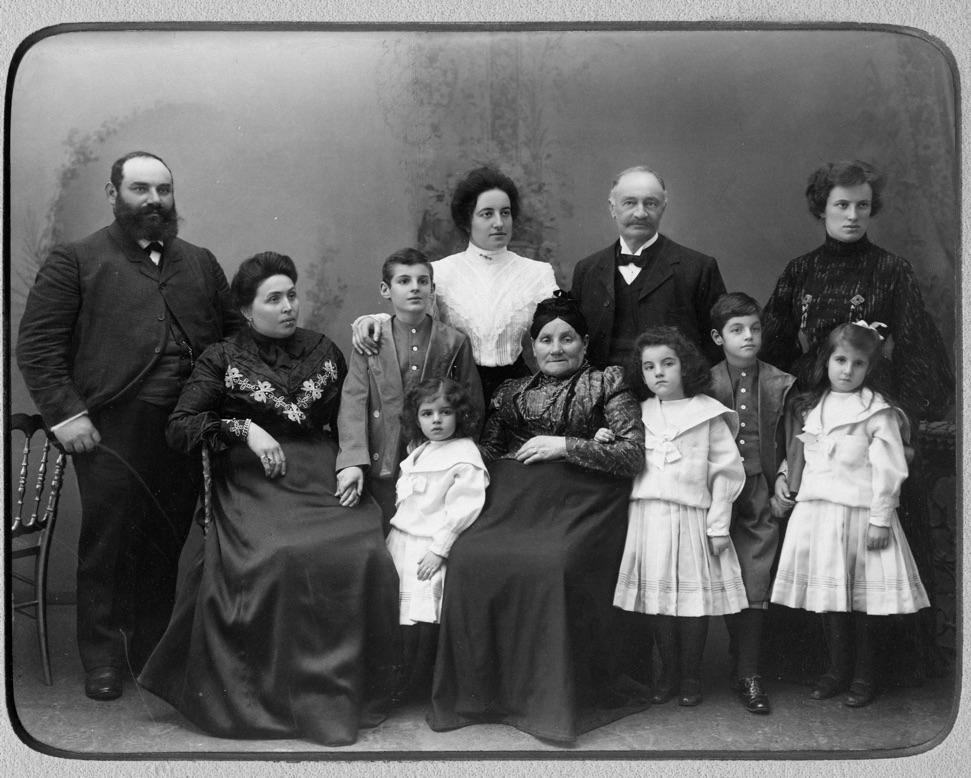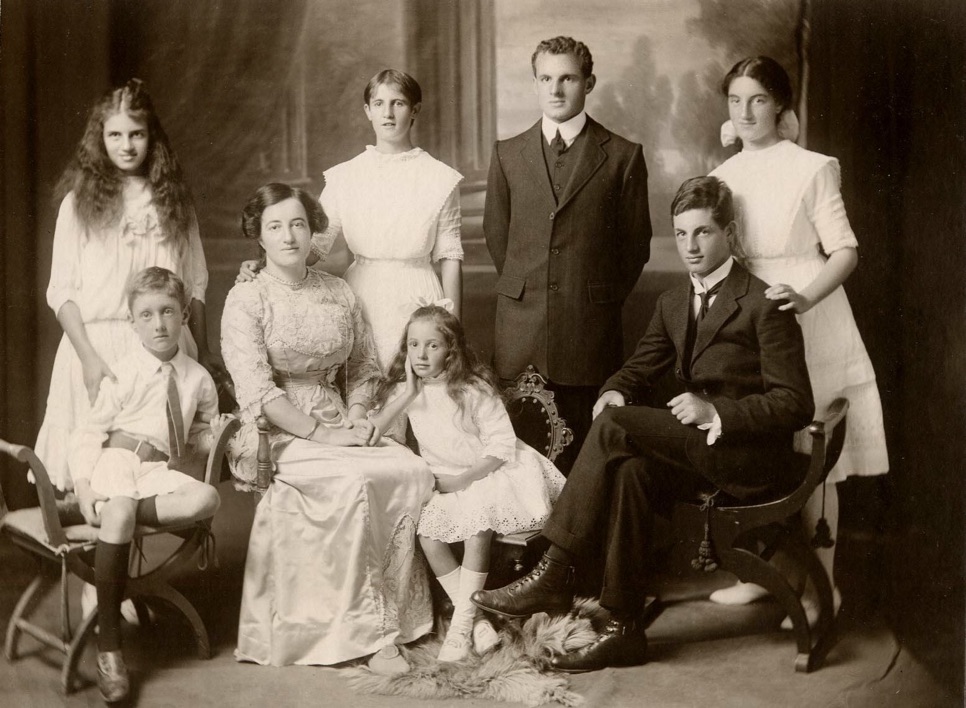De Aar, South Africa

1 December 2015 · Miami Beach, FL, United States ·
DE AAR, ABOUT A SMALL SOUTH AFRICAN TOWN
Posted by Ann Rabinowitz
This morning, I noticed that Eli Rabinowitz (no relation) is going to create a new KehilaLinks site for the South African town of De Aar and was asking for help in obtaining information on it.
I have a great fondness for the town and have done much research on it over the years. It began with my research on the Hillman family and their relationship to the Friedlander family who they married into.
What follows is a capsule history of the town which I did on July 19, 2002:
The South African Cape landscape was broad and desolate in some areas prior to the arrival of the white settlers. The plains portion that reached through the spine of Africa to Ethiopia thrived with human life from prehistoric times. This was particularly the case of the De Aar area that was nestled in the high dry Karoo or "thirstland" as it was known by the Hottentots or Khoisan bushmen.
Originally, the Karoo was a great prehistoric inland sea and the soil provided the later white inhabitants with the wherewithal to engage in profitable farming. The scrub brush vegetation of the Karoo was perfect also for the development of the merino sheep industry that became a staple of the area. In addition, the arid climate attracted many for its salubrious effect on curing consumption or tuberculosis.
In 1837, the first farms were allotted to the "trekboers" or Afrikaans farmers. In 1839, the Afrikaans farmer "Swart" Jan Vermeulen took possession of the "De Aar" farm in exchange for a span of oxen and a wagon. The farm became known as "De Aar" or the "artery" from the underground waterway that flowed beneath the property.
On another continent and in a country faraway, a family was living and dreaming of new opportunities. This was the Friedlander family and their relatives, the Hillmans, who lived in Sabile and Riga, Lativa. In 1846, Wulf Friedlander, the son of Hirsh ben Hessel Friedlander and Zelda Hillman, was born in Sabile, Latvia. His younger brother Isaac Friedlander was born in 1858. By 1878, the two young men decided to leave Latvia and arrived in Cape Town, South Africa.
Their Hillman relatives, also came to South Africa and made their mark in the Johannesburg area.
Taking advantage of what they thought would be good commerical opportunities in the western Cape, Isaac and Wulf Friedlander, obtained an ox wagon and in 1879 travelled to the De Aar District and settled in Rhenosterfontein. There they opened a trading station with a small hotel adjacent to it. They did well in the quickly developing area. Up to that time, there were few Jewish families other than the Friedlanders in the area, although there was a Goldscheider who was a trader who lived thereabouts and there was virtually no anti-semitism.
The government noting the increasing population in the western Cape and the need for transportation which would connect the area with the already existing large cities in the Cape Province and beyond passed an Act of Parliament in 1881 to construct a railway line from Beaufort West to Hopetown. A junction was fixed with the Colesburg extension at a point near the 180th mile from Beaufort West. This junction was known initially as "Number Six", then "Von Brandis Junction", and finally "Brounger Junction" after the General Manager of the railways.
This major public works project attracted 1,400 natives, Zulus and Fingoes, who pitched their tents on the De Aar farm that was in the junction area. The natives began working on the railroad construction and made great progress. However, in 1883, certain disputes arose between approximately 800 Zulu and Fingo railroad workers and they clashed repeatedly. The final "battle" which took place on Christmas Day, December 25, 1883, resulted in 60 dead and many more wounded. A large body of Cape Mounted Rifles under Colonel Southey that became known as the "De Aar Expedition" arrived to successfully bring order to the situation.
Eventually, the railway construction was completed in March, 1884, and the first train steamed into De Aar Station, the new name for what had been called "Brounger Junction". Seeing the opportunities afforded by the new railroad station , Isaac and Wulf Friedlander decided to purchase the "De Aar" farm in 1899. The farm's price of BPS 11,000 was a far cry from the BPS 400 that the prior owner had paid for the property from the original owner "Swart" Jan Vermeulen. The Rt. Hon. G. Brand van Zyl (later Governor-General of the Union), De Aar's first lawyer, signed the deed of sale.
At this point, October 11, 1899, the Boer War began, a war that was to have such a traumatic affect on not only the entire country, but the De Aar area as well. The hostilities stretched through to May 30, 1902. As a major junction on the rail line, De Aar became an important focus during the war as a well-known troop depot and hospital facility and several key events took place there.
On May 30, 1899, Sir Alfred Milner took a special train to De Aar to have a secret meeting with H.C. Hull, an Uitlander solicitor who was Percy Fitzpatrick's closest political ally from the Rand. British troops were deployed to De Aar on October 7, 1899, to hold the railway junction for Sir Redvers Buller, the British Commander-in-Chief, and his Army Corps on their way to Bloemfontein. Following that, in November, 1899, Colonel Herbert Miles, Assistant Adjutant-General, took command of De Aar, so that Lord Paul Sanford Methuen's relief expedition could be mounted.
The official British mobile headquarters train was sent to De Aar on February 6, 1900, but without Field Marshall Lord Frederick Roberts or his Chief-of-Staff, Field Marshall Lord Horatio Kitchener, on board due to fears of sabotage. On February 9, 1900, Field Marshall Lord Frederick Roberts manage to arrive in the area via alternative means and visited De Aar Army Hospital. This was one of the large Army facilities that gained such a terrible reputation during the War. It was adjudged in poor condition as were many of the other medical facilities in the region. They were hotbeds of disease and infection that had been given little money, supplies or attention by the British.
In 1902, at the end of the Boer War, the Friedlander brothers decided to convert the De Aar farm to commercial use so that a town could be built. They surveyed the De Aar farm and thereupon divided it into building plots that were sold at public auction.
According to Mrs. Ethel Herrmann, daughter of Isaac Friedlander and wife of Dr. Louis Herrmann, the well-known SA Jewish writer and historian, her father and his brother Wulf . . . "granted building sites for a synagogue, churches of all denominations, schools, a hospital, a town hall and even land for sports fields and commonages."
In 1903, the Municipality of De Aar was created under the control of a board and in 1904 Cronwright Schreiner, the husband of writer Olive Schreiner, became Town Clerk and served until 1912 when Hendrik Hanekom took his place. Hanecom later became a famous Afrikaans actor. In 1907, De Aar's first Mayor, Dr. Harry Baker, was appointed.
The town continued to thrive and on Thursday, March 8, 1918, the new De Aar Synagogue was opened. The event was officiated by Chief Rabbi Dr. J.L. Landau who came from Cape Town and was hosted by Mr. and Mrs. Isaac Friedlander. A treasured Friedlander family heirloom, presented to Isaac Friedlander as Life President of the Congregation, is the silver trowel that was used at the laying of the foundation stone for the synagogue in 1917.
Individuals who participated in the ceremonies included Leo Baumgarten, Samuel Blumberg, Rev. Israel Hirsch Borkowf, Feodora Friedlander, Isaac Friedlander, Mrs. Isaac Friedlander, Hessel Friedlander, Wulf Friedlander, I. Goldberg, B. Goldstuck, M. Hoffman, I. Jacobsohn, B. Jassenowsky, S. Joffe, A.M. Lowenberg, W. Lowenberg, M. Rudansky, P. Salkinder, and J. Thal.
The founders of De Aar lived long and fruitful lives and did much to create a continuing presence in the area. In 1925 Isaac Friedlander died in Cape Town and was buried in De Aar and his brother Wulf died in 1928.
Present day attractions in De Aar include a Garden of Remembrance honoring the British soldiers killed in the Boer War; the house that is presently being utilized as a restaurant where famous South African writer and feminist, Olive Schreiner, lived for eight years with her husband Cronwright Schreiner, who was the De Aar Town Clerk; and Khoisan rock engravings which are to be found on the Nooitgedacht and Brandfontein farms.
The History of De Aar by Ann Rabinowitz
The second photo is Wulf Friedlander, his second wife Johanna and his children from his first and second wife in 1912.
Ann Rabinowitz


I am attaching two photos of the Wulf Friedlander family. The first one is when Mr. Friedlander took his children from his first wife Jenny to see her family in 1904 and you can see his second wife Johanna too.
Ann Rabinowitz


